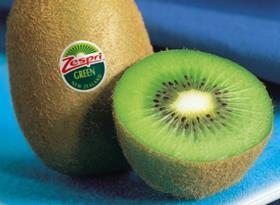
While overall fresh fruit consumption continues to stagnate in Japan, kiwifruit is one product that is more than bucking the trend.
Kiwifruit has recorded its strongest June ever in Japan on all three performance measures; namely household expenditure, household consumption and purchasing price, according to latest figures from Ministry of Internal Affairs and Communications Statistics Bureau.
The average Japanese household consumed 239g of kiwifruit in June, spending ¥202 on the product, well up on the 12-year averages of 208g and ¥165 respectively. These consumption rates, the highest ever, came in spite of a record high purchasing price of ¥847 per kg.
“It’s amazing,” said Junichi Moriya, president of major importer and wholesaler Tokyo Seika Trading, commenting on the latest figures.
“The kiwifruit performance is exceptional. It’s obvious that consumers want to eat more kiwifruit, because they paid more despite the higher prices. And it shows that demand for kiwifruit is still growing in the Japanese marketplace.”
The stellar performance in June follows on from a very strong May, when Moriya said kiwifruit was “really hot” in terms of expenditure, consumption and price.
The overwhelming majority of kiwifruit imports during these months come from New Zealand, for which Japan is still the number one market.
Japan is on course to import 18.5m trays from New Zealand this year, a 1m increase on initial projections of 17.5m trays. Green kiwifruit still accounts for the majority of sales, at around 13.5m trays, while gold varieties including the new G3 make up the balance (around 5m trays). “G3 has entered the market here very smoothly and successfully,” said Moriya.
While kiwifruit continues to make gains, overall fresh fruit sales in Japan remain sluggish. Although the average purchasing price for June was the highest on record for the month, at ¥467 per kg, household consumption (5.83kg) and expenditure levels (¥2,723) were both low.
“In general, the higher price and short supply supply situation forces the consumption to ease off,” said Moriya. “Domestic fruit supply was tight in the first half of the year, and that pushed up market prices.”
Banana consumption for June (1.78kg) was also much lower than the 12-year average of 1.89kg, as demand was dampened by the highest-ever retail prices for the month, with an average purchasing price of ¥248 per kg.
“Due to the weak yen, the import cost [of bananas] has risen significantly in the last few years. Combined with a short supply trend, this has driven up the retail prices,” explained Moriya.
Japan’s banana imports for the first six months of 2014 (January to June) fell by 3.4 per cent compared with the previous year.



